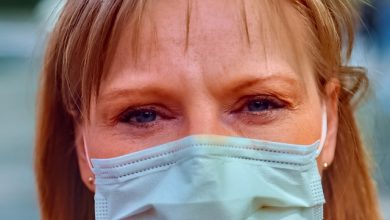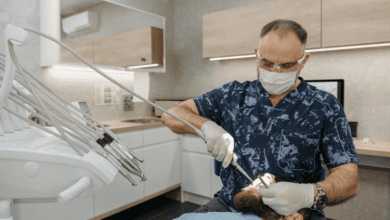What is the possibility of Obstructive Sleep Apnea (OSA) with pediatric cases?

Obstructive sleep disorders are common in children. This is a medical condition that is accompanied by breathing issues. Snoring, mouth breathing, and having disturbed sleeping often make parents seek medical conditions for their children. Snoring is one of the common medical conditions that is prevalent in around 3 to 12 percent of children while Obstructive Sleep Apnea affects 1 to 10 percent of kids. There often occur the chances of mild symptoms in some cases, while for others it can outgrow the condition. Obstructive Sleep Apnea (OSA) is a result of other serious medical conditions called neuromuscular disease, craniofacial abnormalities, and adenotonsillar hypertrophy.
ENT at Bloom Hospital is the sub-specialty concerned with the treatment and diagnosis of ear, nose, and throat. The doctors of the Bloom Hospital Hyderabad are trained to provide balance in hearing and disorders related to swallowing, sinuses, allergies, breathing & sleep issues, skin disorders, head, and neck cancer.
How much should you be concerned with OSA?
Sleeping disorders in children are a matter of public health concern. It further increases the risk of obesity and hyperactivity in the population. In one of the studies, it is demonstrated that children with hyperactivity and inattentive behavior disorders possess underlying medical conditions like Obstructive Sleep Apnea (OSA). In actuality, these children require attention in recognition, treatment, and diagnosis of sleep disorders and related breathing problems rather than using stimulating medications.
It is estimated that nearly 7 to 11 percent of children face nighttime breathing issues and it comes out to be sleep apnea, snoring, or something else. Around 90 percent of such medical conditions in children go undiagnosed.
Symptoms of Obstructive Sleep Apnea (OSA)
While having sleep, the signs of pediatric sleep apnea may include:
- Snoring
- Difficulty or having pauses in breathing
- Restless sleep
- Coughing or choking
- Mouth breathing
- Bed-wetting
- Sweating while sleeping
- Sleep terrors
It is not always true that children or kids with Obstructive Sleep Apnea (OSA) may snore every time they sleep. They might have other disturbing elements like:
- Day time sleeping
- Poor Performance in school
- Difficulty in paying attention
- Learning problems
- Behavioral problems
- Poor Physical Condition
- A problem in gaining weight
- Hyperactive
Causes, Risk Factors and Complications involved in Obstructive Sleep Apnea (OSA)
Obstructive Sleep Apnea often causes obesity in children. It is one of the most common factors in both kids and adults or children below 15. OSA is also accompanied by enlarged tonsils and adenoids. However, it is obesity that often creates multiple disorders with the learning, sensing, acting, and physical activities of the children. Other underlying factors associated with obstructive sleep apnea are:
- Down syndrome
- Abnormalities related to skull or face
- Cerebral palsy
- Occurrence of Sickle cell disease
- Neuromuscular disease (a common cause)
- Either affected by low weight or heavyweight gain
- Family history of obstructive sleep apnea or presence of OSA in genes
Disease never sees age and gender. Moreover, Sleep apnea can affect anyone either adults or children. There are certain factors that are only associated with pediatric Obstructive Sleep Apnea and can infuse certain serious complications, including:
- Inability to grow as per age
- Heart problems at an even lower age
- Severe disorders or even death
What are the signs of Obstructive sleep apnea?
Obstructive sleep apnea creates breathing issues and when breathing stops, the level of carbon dioxide increases in the body. This triggers the brain to wake up. Most of the time, this condition happens so quickly; you go to sleep without knowing that you will wake up in the middle of the night.
The pattern repeats when a child or even an adult is affected by obstructive sleep apnea. This is because people undergoing this condition often reach a deeper or restful level of sleep.
Signs of obstructive sleep apnea in kids include:
- snoring, with pauses, or gasps
- heavy breathing while sleeping
- very restless sleep or changing positions showing disturbance
- bedwetting (especially when the child stays dry all day long)
- daytime sleepiness
- behavior/learning problems
- Sleepwalking
- Night terrors
And because kids face a hard time while going to sleep, this may create other problems like:
- hard time waking up in the morning
- feeling asleep during the day
- trouble in paying attention
Obstructive sleep apnea can affect school performance. It can also be related to the effects of ADHD or other learning problems.
Conclusion
When there are mild symptoms of Obstructive sleep apnea, your doctor may examine the sleep of the child to see if the symptoms are improving before finally taking the treatment. Nasal sprays and other medicines may help the kid with OSA. However, there can also be chances of occurrence of OSA because of big tonsils. In such a condition, your doctor may refer you to an ENT specialist. Your ENT may recommend you removal of tonsils, removal of large adenoids, and even removal of both. These surgeries further affect the treatments for obstructive sleep apnea.
For the underlying disease and cause of pressure in the nose, while breathing, you can consider looking for specialists at Bloom Hospital Hyderabad. The doctors will help you with the correct treatment for nose, throat, or mouth. They may help you connect with air pumps and their usage.





